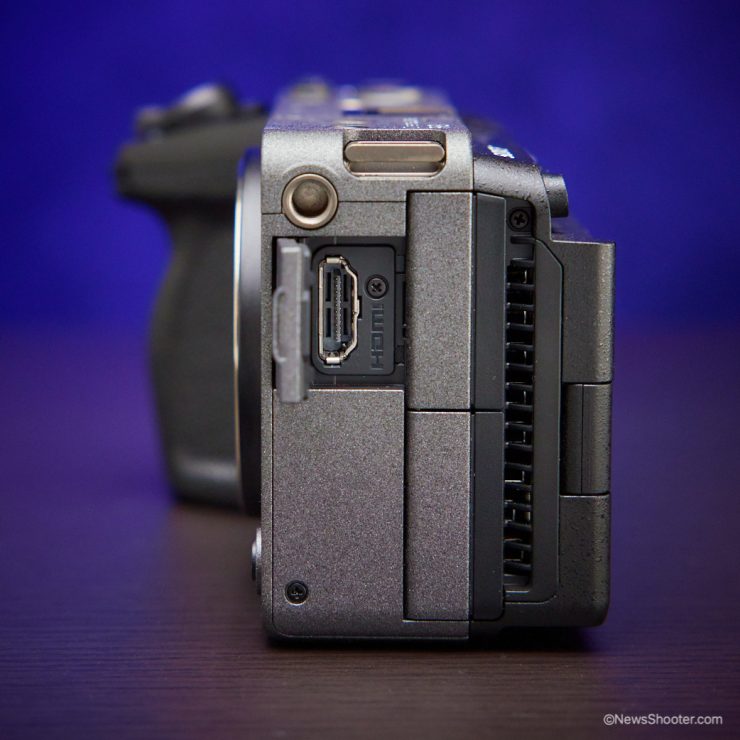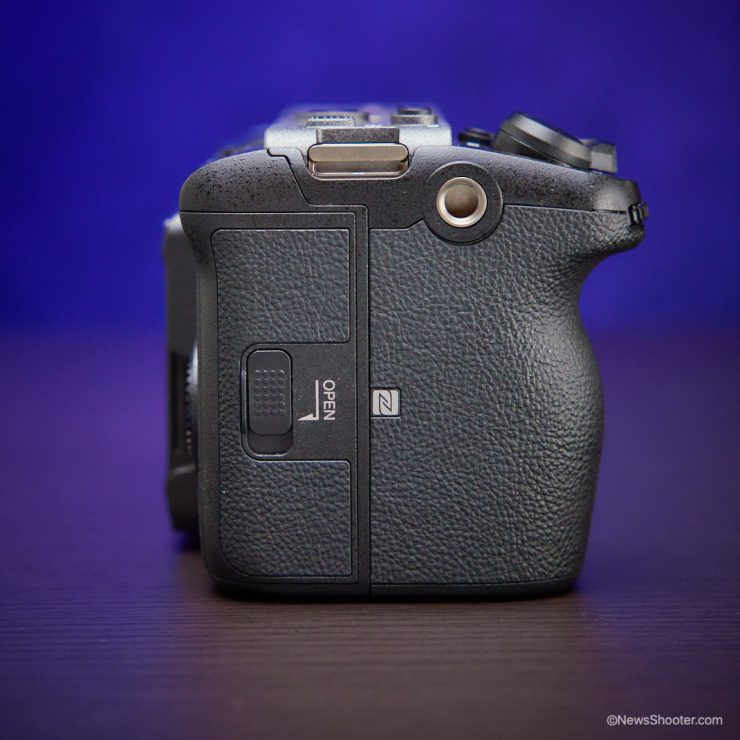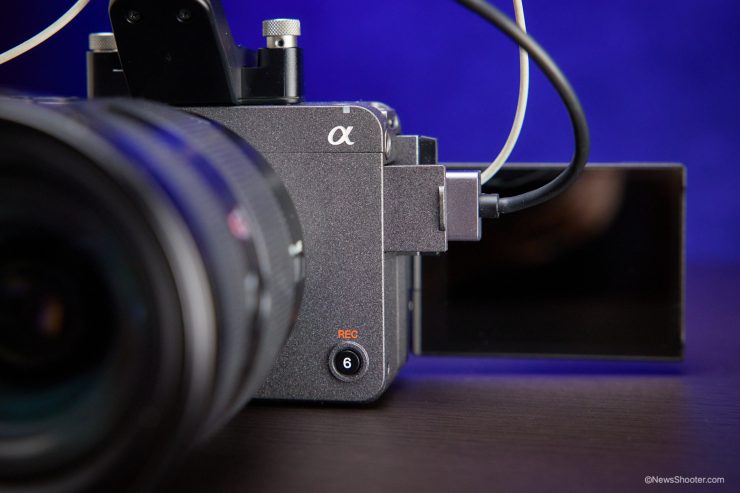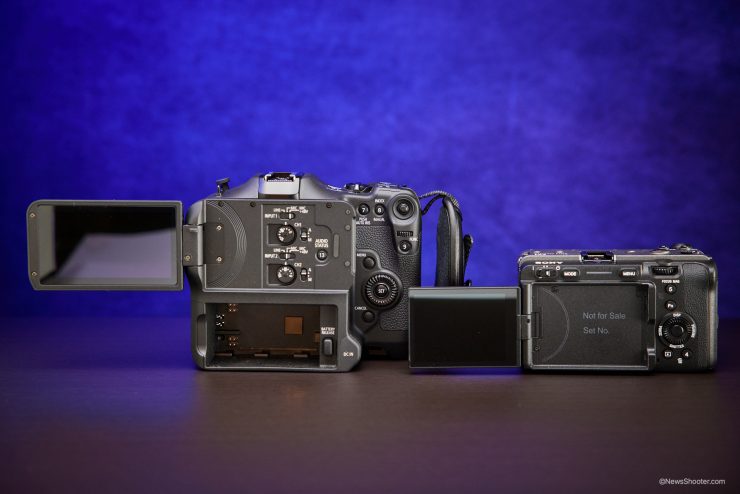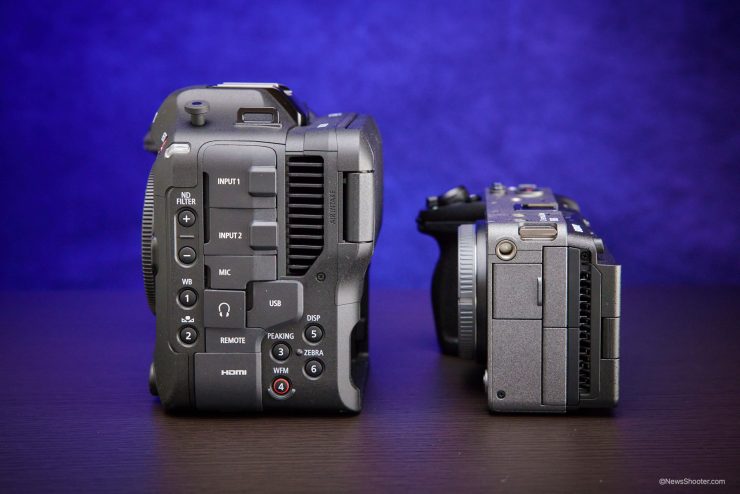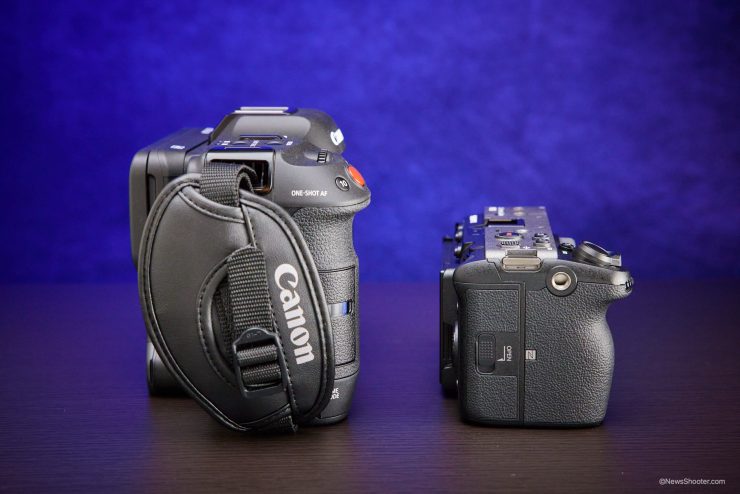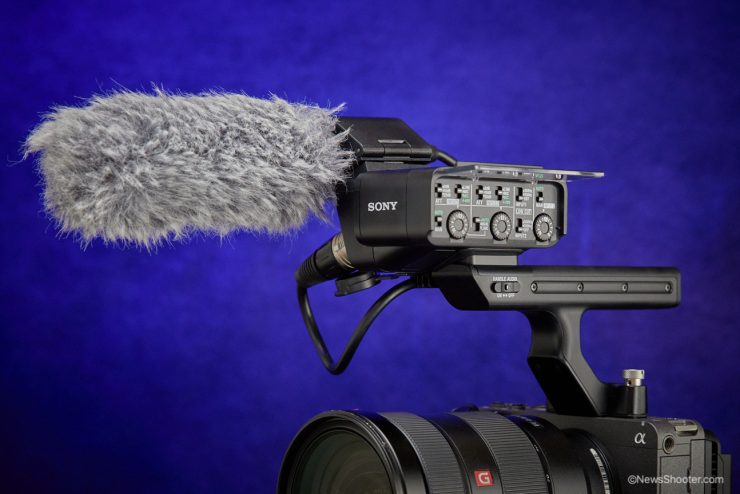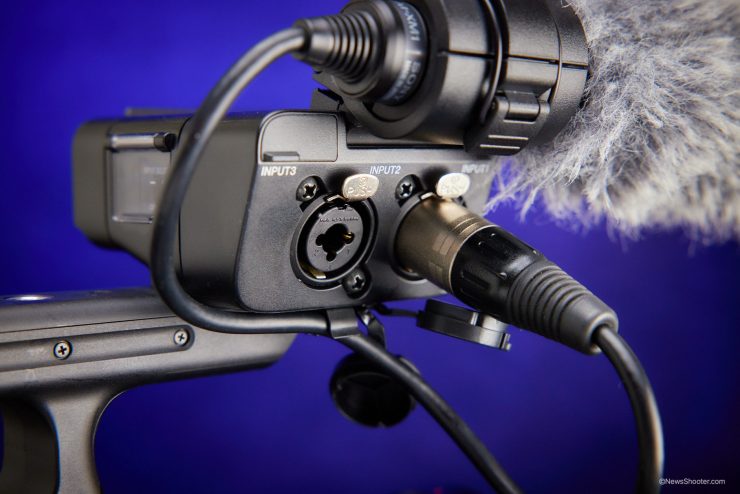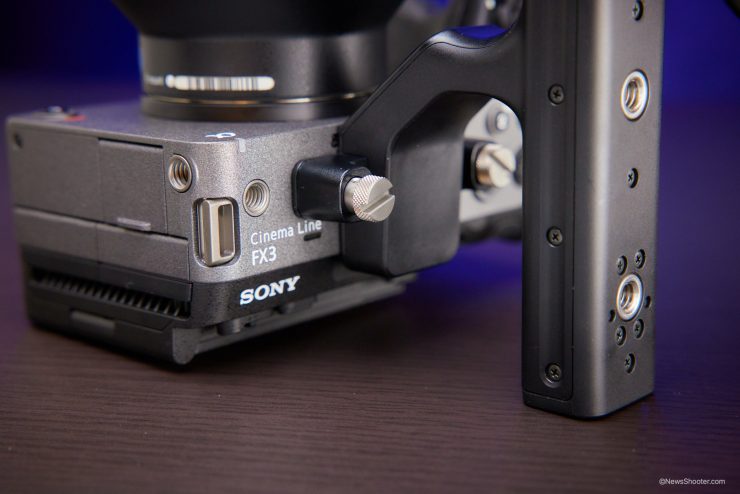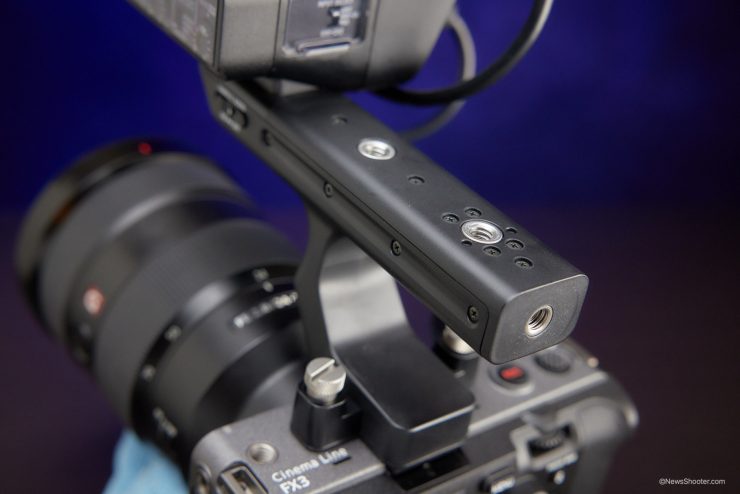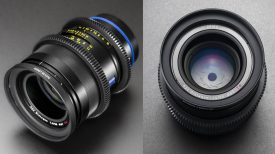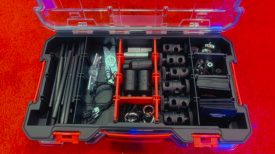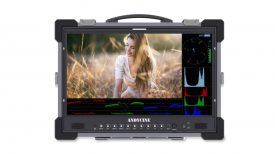
2020 brought us many new cameras in both the cinema and mirrorless space, and the beginning of 2021 doesn’t look like we are even close to done yet. Just a week ago, Blackmagic Design released the Pocket 6K Pro with internal ND, an upgraded 1500 nit tilting screen, and an optional EVF. Yeah, we are not done with camera releases at all!
The new Sony FX3 and Canon C70 are cameras that take-on the mirrorless form factor, but these two cameras are very different, except they both share not having an EVF. This may be in part to keep the price down, and clearly, both Sony and Canon have done some research that makes them feel users don’t need one. Many box-style cameras don’t even have an LCD screen, so at least you have a touch screen on both the C70 and FX3, but I feel a viewfinder is essential for normal operation, especially outdoors. Shooting off a small LCD is not easy. I tend to feel uncertain if I’m in focus. Also, I can miss something in the frame that I don’t want.
Color
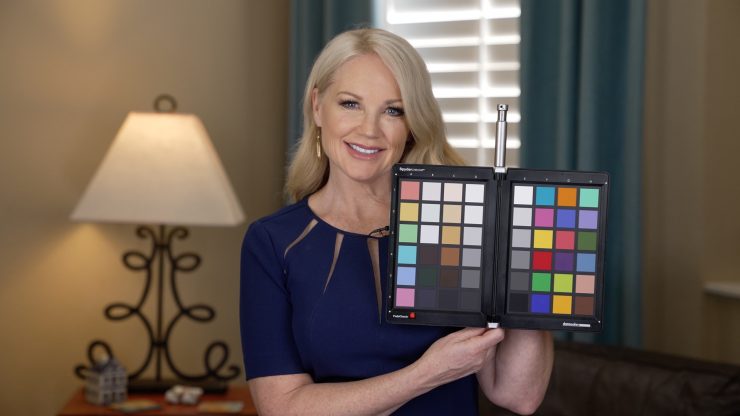
I like S-Cinetone a lot. This is the best color I have got from a Sony mirrorless camera and it has everything to do with S-Cinetone. The sample I shot around San Diego was all shot with S-Cinetone as well. Skin tone is very nice and the profile gives you some room to color grade. It’s an excellent start and to me doesn’t need to be corrected.
Small and Mighty
A powerful camera that is small in size and big on specifications is something many people want, especially for gimbals and crash cams or a B-Cam. There is no denying the small and powerful form factor has big advantages, and the Sony FX3 has taken on this exact form factor.
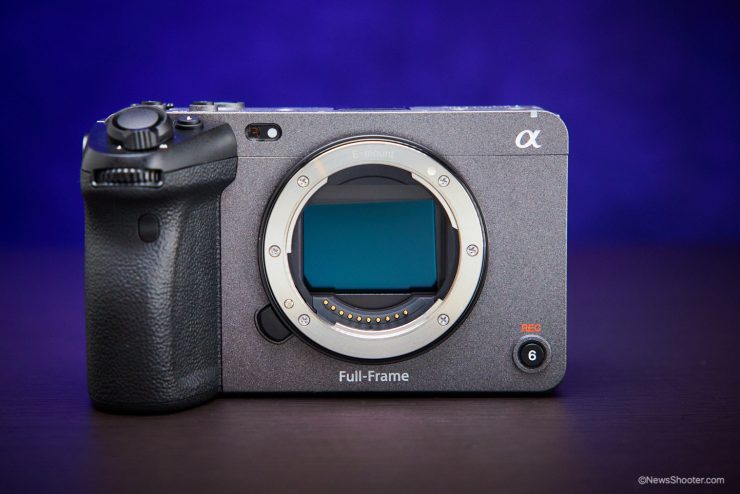
The C70 and FX3 share excellent specifications, and with the Sony FX3, they went for ultra-compact. It’s an engineering feat to make such a small full-frame camera that can shoot 4K 120fps without melting. The added internal fan system is the key to keeping it cool.
I’m not going to go into the full specifications as Matt did an excellent article with all the nitty-gritty. Get a cup of your favorite beverage while taking it all in. I will be giving my opinions on the FX3 and its usability.
Form Factor
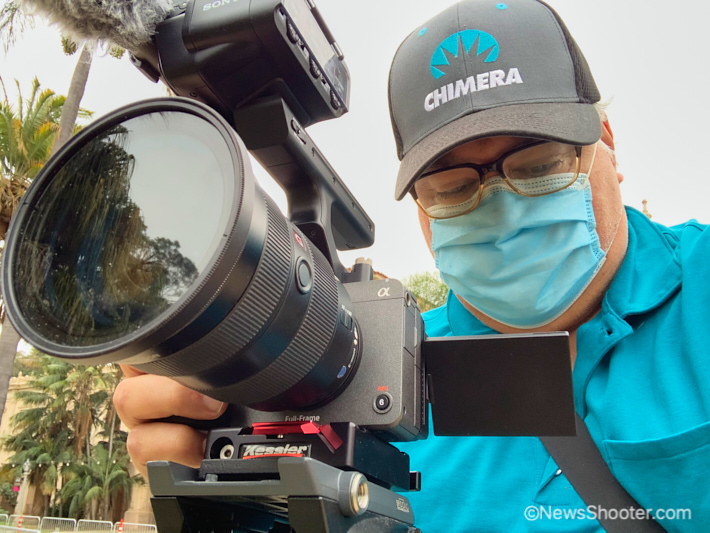
The FX3 is small. It looks like a fatter a7 type camera. With the Sony 24-70 F2.8 attached, the space between the lens and grip is tight. The top of my fingers pressed against the lens. Like other alpha cameras, the mount sits low on the small body, and with some of the fatter Sony lenses, they can go past the bottom of the camera. This can be an issue when using sleds or mounting to a teleprompter.
The FX3 is basically an a7s III, but purpose-built for video use. I can also see Sony designed the FX3 to use on their new Airpeak drone where an EVF isn’t necessary.
Cageless Design
The body is flat on all four sides and made of strong and light Magnesium Alloy. It has three 1/4″ 20 taps on top and one on each side, plus on the bottom for mounting to a tripod or adding a QR plate. If you don’t use the MI handle, then you have two extra 1/4″ 20’s available.
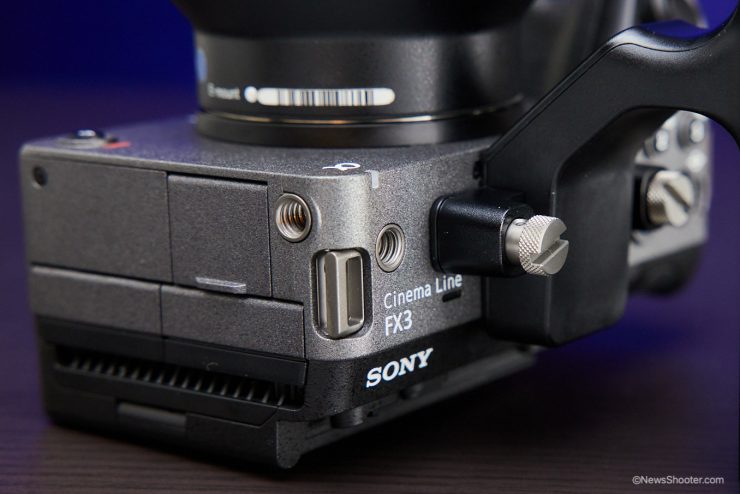
The top mount is on the left side and doesn’t have a lot of room to mount anything. Maybe an articulating arm would fit or a cold shoe. The one on the side is placed right above the HDMI door. There is no way to use this tap without blocking the HDMI output. Either way, the space is fairly tight.
The tap on the left side is the most usable of all the mounting points as it doesn’t block anything. Oh, wait. It blocks your hand from the grip, so if you are using a tripod and not handholding the FX3, that will work.
Sony stated the FX3 has a cageless design due to the mounting points they added around the body. While these can come in handy, I think many will put a cage on it anyway as the options are rather thin. With the handle attached, you have three mounting points on top. left and right. On the bottom is a 1/4-20″ for mounting to a tripod or adding a QR plate.
Menu and LCD Screen
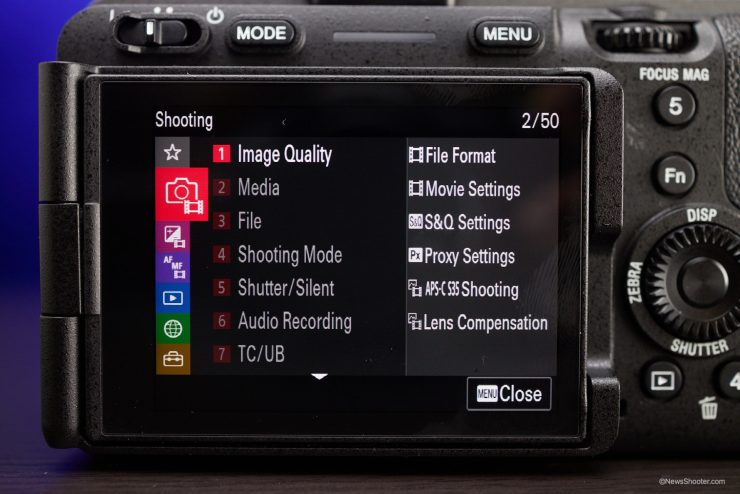
The menu structure is the same as the new a7s III when in video mode. It’s much better than other Sony menus, but I would have liked an even easier cleaner menu. In fact, it should have the same structure as the FX6 since it’s considered to be a part of that lineup. With that, I understand it’s not easy to put the vast amount of settings available to the user with the added photography settings, but the FX3 looks to be a camera FX6 and FX9 users would like to use, and keeping it familiar is a big plus.
The LCD screen looks to also be the same as the a7s III. For a camera that doesn’t have an EVF, it would have better to have a larger screen, but this isn’t possible due to the small size of the FX3. Reusing components from an existing camera makes a lot of economic sense.
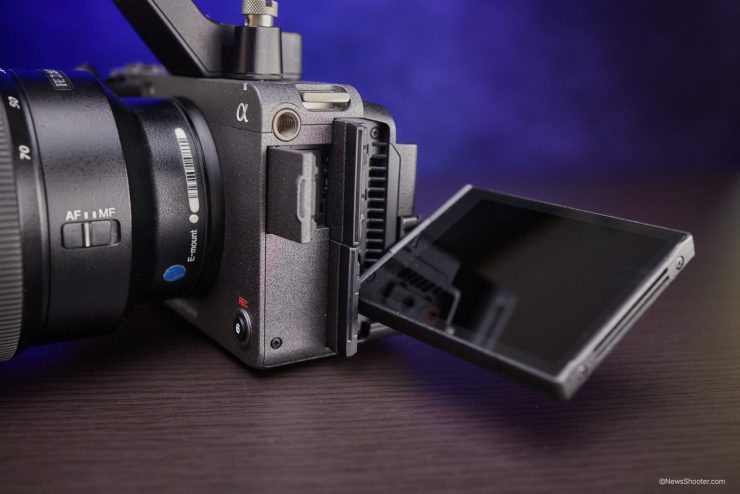
The LCD screen can fully articulate and flip into a selfie position without obstruction; however, if an HDMI cable or other ports are used, they will block the view. It will also require the screen to be flipped before it is fully opened. This isn’t a big deal as it’s easy to open and flip, but the image being blocked will make it less helpful if you want to see the entire image, plus access to the touch functions will be very hard to do with cables in front of the screen. This is a common problem with all flip-out screens if you want to use the IO options on the camera.
No Overheating
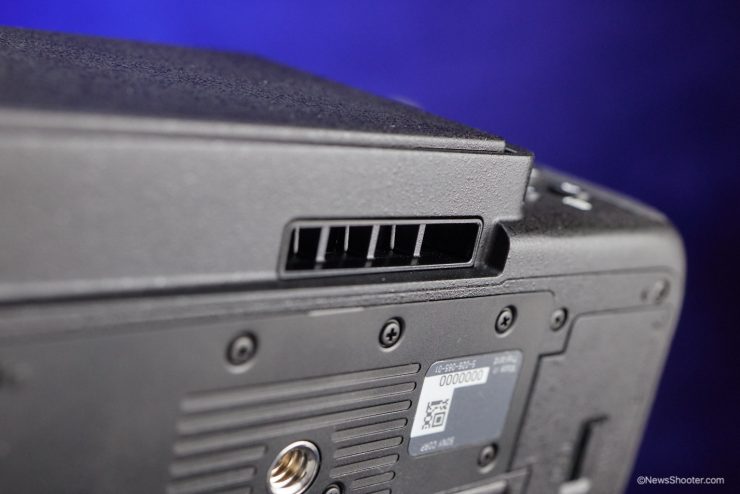

Fan Intake on the bottom 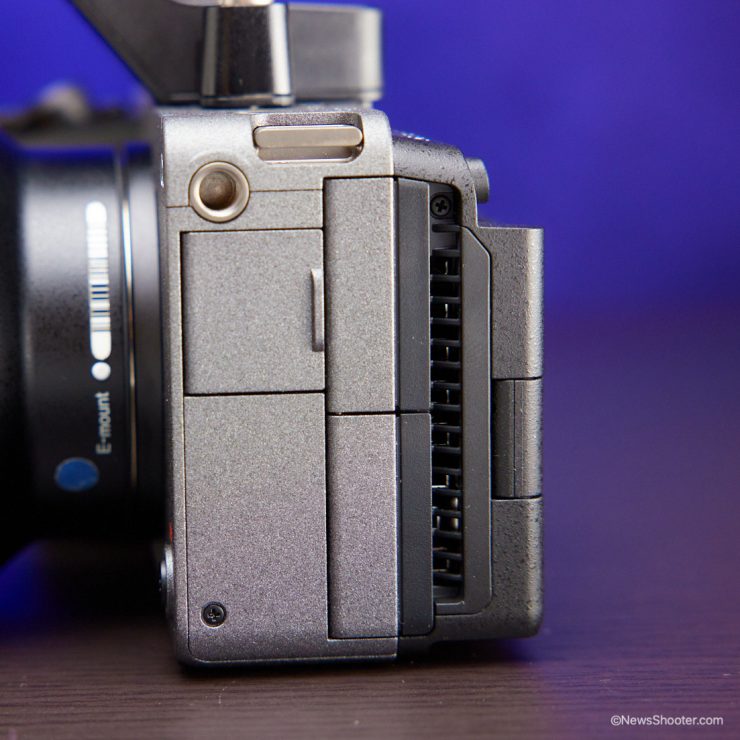
Fan Exhaust on the left side
You would think a body so small would overheat, but I didn’t have any issues with a cooking camera due to the fan design.
You have options to turn the fan off, Auto, Minimum, or Off in Record.
On the bottom is an intake and the exhaust is on the side. The fan is very quiet and isn’t an issue at all. This is an impressive design.
Buttons and Shortcuts
Since the FX3 is primarily a video camera, it doesn’t need stills settings on the body and gives the FX3 buttons and shortcuts a cleaner layout. You can program the buttons to have different settings when in stills mode. This is handy and also very customizable.
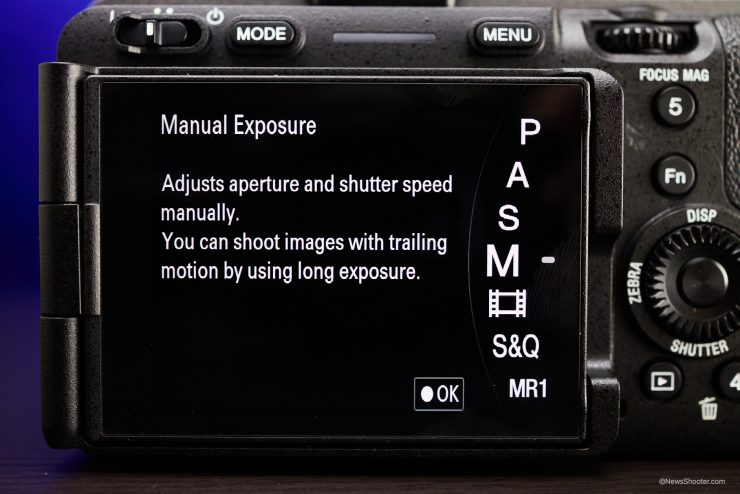
The menu is separate for video and stills. To switch the function, a simple push of the MODE button brings up the options. You can’t shoot stills when in video mode. I went through the menu to see if I could set the front button for taking stills, and it wasn’t an available option; however, in stills mode, the REC button does trigger video record.
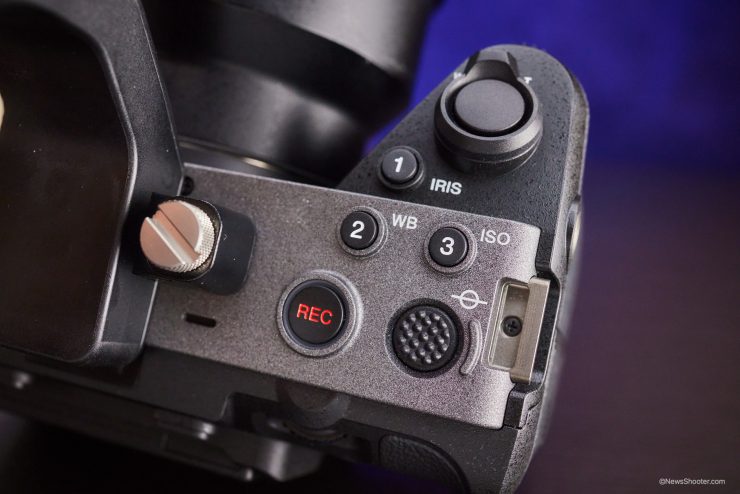
On the right side, there are several shortcuts grouped together. On the front is a mini zoom rocker for compatible lenses. Unfortunately, I don’t have any to test with. While I mentioned the camera doesn’t have dedicated buttons for photography, it can capture still images. The FX3 shoots 12.1 Megapixel stills similar to the a7s III.
Many functions cross over when shooting stills, so the WB white balance, IRIS, and ISO work in both modes.
FX3 Size Compared to Canon C70
If you put these two cameras in a price class, they wouldn’t be in the same one. The C70 cost over $2000 more than the FX3, so it really shouldn’t be; however, I know you guys will want to compare them nevertheless.
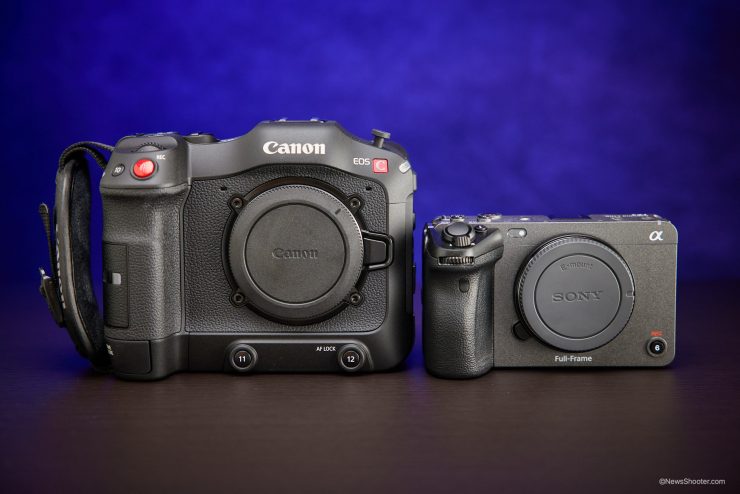
As you can see, the size is much smaller than the C70.
The Magical Multi-Interface Shoe
Sony added the MI hot shoe on several cameras. The MI hot shoe can be used to pass audio directly into the camera and supports flash accessories. The list of MI-compatible accessories is large. I really like this feature as it takes the cables away and gives you several options with existing modules. It would be amazing if it could also be used for a small EVF but it’s designed for audio.
FX3 MI Handle
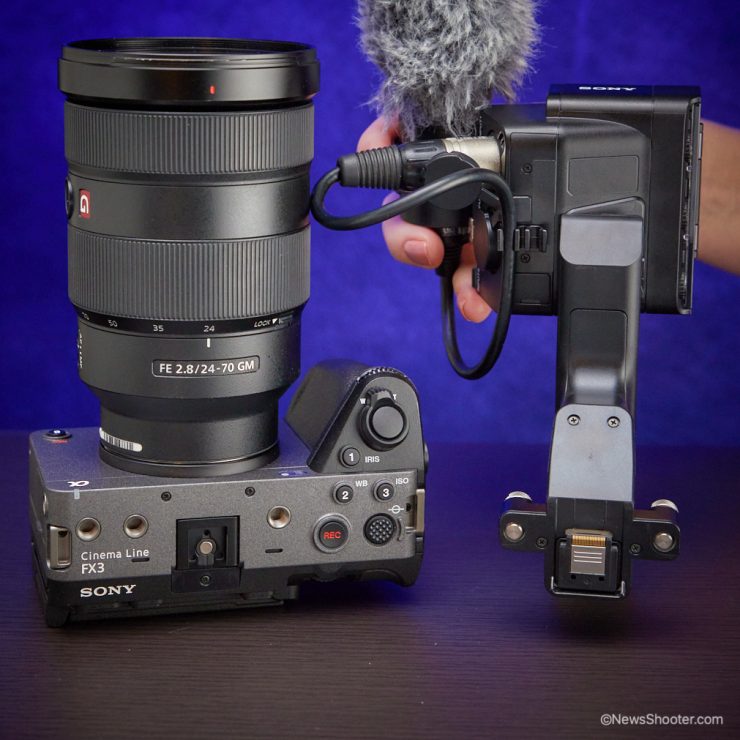
The included handle is a new design with the MI contacts on the handle’s bottom, where it mounts to the body. It uses two thumbscrews to securely fasten the handle to the body, and it works very well. It does have a little flex to it but doesn’t hinder the performance. It really is very light in weight.
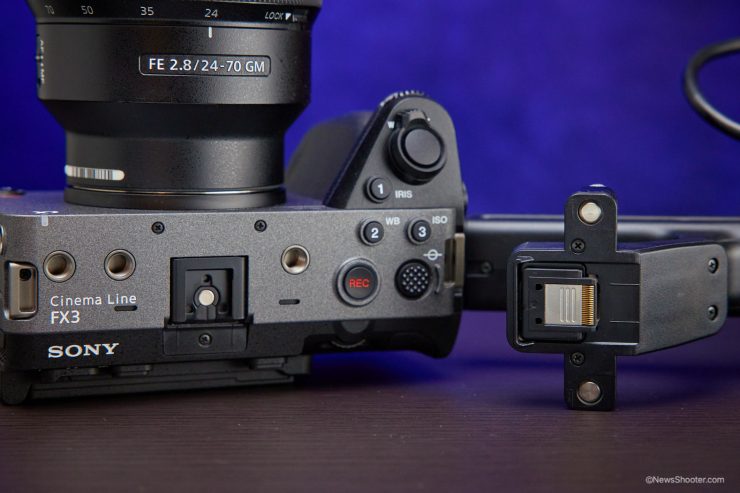
The handle is made of plastic and is very light. It has three mounting points—two on top and one in the back. I like the handle as it is small and lightweight. It feels secure with the two thumbscrews. I also like that you don’t need an Allen wrench to lock it down. Pull a coin out of your pocket if you feel a need to really get it tight.
The attached TRS/XLR module looks very similar to the XLR-K3M XLR audio adapter ($598.00), but it’s not removable from the handle. It features two full-size XLR channels and a shotgun mount. Unfortunately, no shotgun mic is included like the ECM-XM1 this is with the KLR-K3M.
I wish the module could be removed for those situations where you didn’t want to use the handle, but that isn’t possible. I do understand why it is a one-piece design. The handle and the XLR module would need the MI contacts, which adds more to the design, plus mounting it to the handle could cause some fiddly issues with it staying securely mounted. I think it comes down to the cost savings and keeping the price down for the kit. Again, you can use the XLR-K3M instead of the new MI handle if you want, and I don’t see why you couldn’t use the FX3 handle on other alpha cameras, but it won’t be able to lock down, making it a very dangerous thing to do.
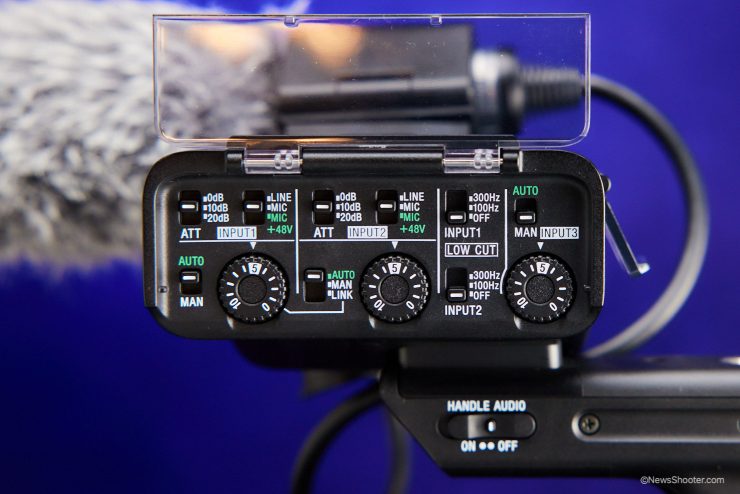
The MI XLR module has, for the most part, the same features you see in the XLR-K3M. The FX3 can record up to four channels of audio. That is impressive. It has two TRS/XLR inputs and a 3.5mm. You can use the camera’s 3.5mm input as well, all at the same time. You will have to use the camera’s audio settings to change the levels. The camera’s 3.5mm jack is stereo, so technically, with a 3.5mm splitter, you can have 5 channels of audio.
Remember how tough audio capture was with a DSLR? Sony has made audio easy with the MI shoe.
Below are some of the possible setups for audio.
- XLR Input 2-channels + Internal microphone (2 channels)
- XLR Input 2-channels + Internal Microphone + 3.5mm mic input
- XLR Input 2-channels + Stereo splitter cable going into the 3.5mm mic input
The audio level dials rotate with some dampening. This is a good thing as the dials won’t rotate on their own due to vibration, plus there is a clear plastic cover to prevent the buttons from accidentally getting changed. You still have access to the dials since the cover allows a little gap for access. Each of the two channels has a line, mic, and mic with 48V phantom power.
I like the ability to adjust the dB level settings as not all microphones have the same sensitivity.
- 0dB: Standard input level at -60 dBu
Suitable for recording with a low-sensitivity microphone while amplifying sounds. - 10dB: Standard input level at -50 dBu
Recommended input level for the supplied microphone. - 20dB: Standard input level at -40 dBu
Suitable for recording with a high-sensitivity microphone while keeping the sound volume low.
Overall I like the MI handle, and it’s included, which makes it one of the best accessories I have seen in a long time. The a7s III cost $400 less than the FX3, so with the included MI handle, it’s actually cheaper than adding the $598 XLR-K3M to an a7s III.
Media Options
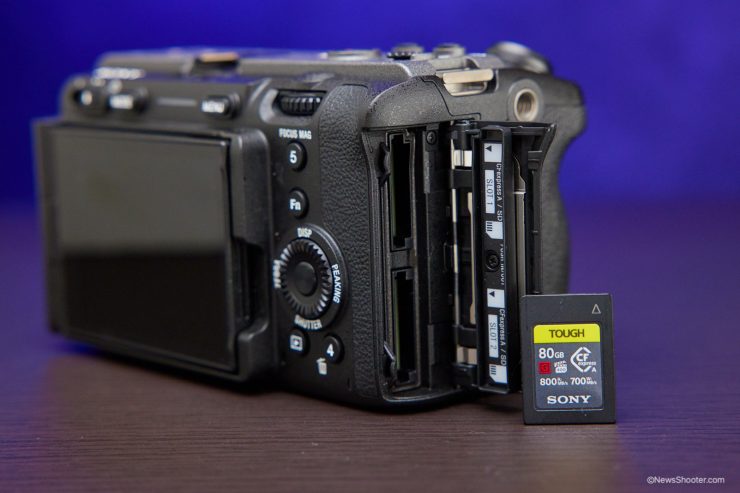
The FX3 uses the new CFexpress type A, as well as SDX SD cards. The only time the fast CFexpress type A cards (VPG200 or higher) is required when shooting in S&Q 10-bit 4:2:2 Intra 60p. The data volume can be up to 1200 Mbps.
If you dont see yourself shooting high-quality, high frame rates, a V60 or V90 will work just fine. The CFexpress type A cards are expensive. A 160GB card runs about $400 USD compared to a Sony Tough SDXC II V90 160GB costs $210 US.
Rolling Shutter
The rolling shutter is very minimal due to the fast readout speed of the sensor. Jello has been an issue with all CMOS cameras, and Sony addressed it with a better processor than a global shutter.
Usability
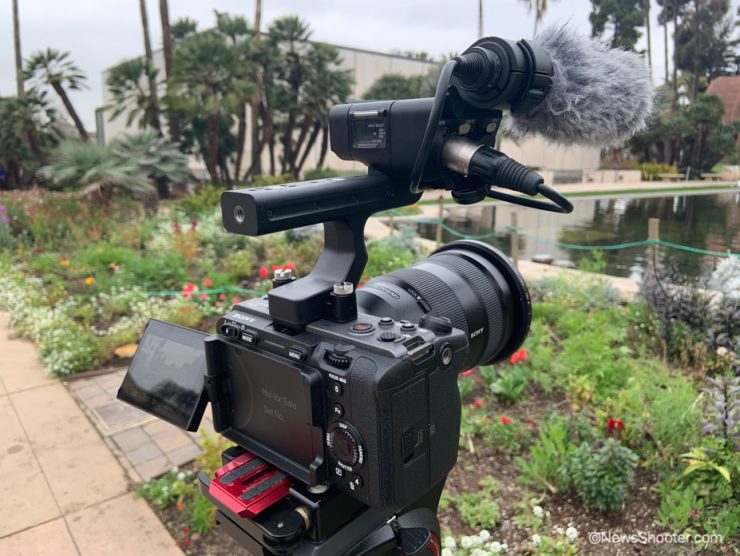
The FX3 is purpose-built to be compact. If you have shot with a Sony mirrorless camera before, you will be right at home with the FX3. For me, I miss the EVF a lot. This is partly due to my age and the need to wear reading glasses. Shooting only off a 3-inch LCD isn’t ideal, and I would add either an EVF or high bright monitor to the camera.
I like how light the FX3 is with the MI handle. It feels good in the hand for low shots or taking on and off the tripod. With the added three mounting points make adding an EVF or monitor fairly easy with the right hardware.
The camera doesn’t overheat due to the internal cooling system, and the fan is very quiet. The Atomos Ninja V recorder is much louder than the FX3. Speaking of recorders. When you use the Atomos Ninja V, you can record ProRes Raw via HDMI. This makes the FX3 a very versatile camera, and again the dang thing is small and not power hunger.
No Viewfinder/EVF
No EVF is an issue for me. When I went out to do some testing, I found shooting with the LCD alone was not good. It’s just too small for full-time use, and outside it’s hard to use. I feel sony expects the user to add a monitor or EVF. It really is the one missed feature I wish Sony would have added. The a7s III has one of the best EVF’s on the market and knowing that it’s frustrating, it’s not on the FX3; however, the PortKeys LEYE is a good inexpensive EVF option if you are on a budget. I reviewed the LEYE so check it out.
The downside, unlike with the Canon C70 with its CORE SWX Nano battery option with power taps, is the FX3 doesn’t have a powering option for the LEYE as it uses an internal battery as opposed to a larger one with power taps on it.
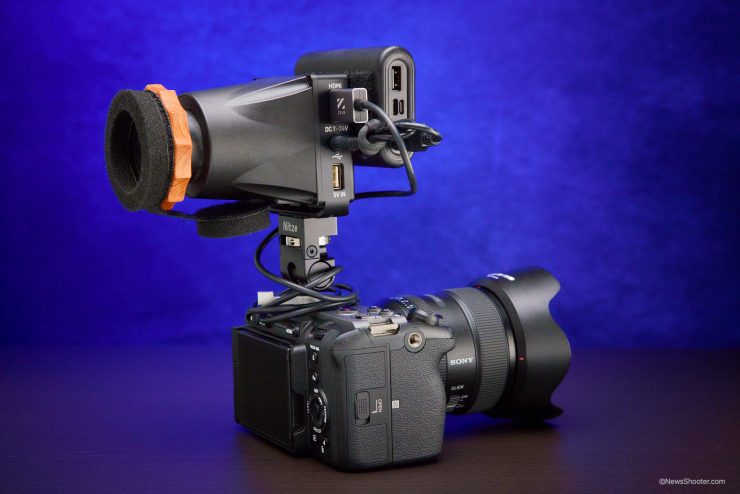
To fix this problem, I searched for an external battery that delivered 5V with USB that was more of a square design. This Miisso 10,000mAh battery looked like an excellent candidate. I wish it was a little smaller, but it will have to do, and it works really well. It only adds 240g or 8.46 oz to the EVF and can power it for hours.
No built-in ND
Nothing to see here 
No 180 Degree Shutter
The FX3 is not an alpha camera but part of the Cinema Camera FX line up, but it doesn’t have a 180-degree shutter option. Instead, it uses the stills camera type of shutter settings. While it isn’t a big deal it shouldn’t be an option. When shooing video at 24 fps you set the shutter to 1/48 of a second. This is a proper shutter setting for 24 fps. On the FX3 you set it to 1/50th of a second. If you change frame rates then you also need to change the shutter speed. If the FX3 had a 180-degree shutter setting the shutter speed would follow the frame rate and you won’t have to make the changes manually avoiding a possible slow or fast shutter setting.
Final Thoughts
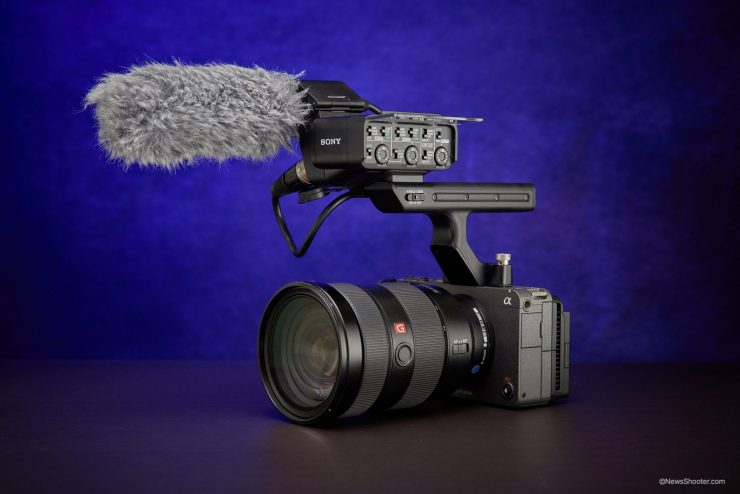
Sony created a camera that, for the most part, is all alone in its space. It is truly a hybrid camera that turned into a video camera full-on with some impressive stills options too. Sound familiar? If you are a Sony alpha a7 series video shooter and want the same form factor, then the FX3 is for you. The bummer is if you invested in the a7s III already, as I feel the FX3 is what you always wanted in a hybrid. Personally, I would pick the FX3 over the a7s III for video as I don’t really care for the photography aspect of the camera, and the price is really good for the specifications the FX3 delivers. You just need to budget for a monitor or EVF if you don’t already have a solution.
We have seen many cameras without EVFs, such as the Z Cam, RED, Canon C70, plus the C200 and C300 MKIII have a no EVF option, and the BMD Pocket 4K, 6K. All of them sell pretty well, so it does not a surprise that the FX3 doesn’t have one, but I miss it. I also feel the lack of timecode input is a big miss as Sony is calling the FX3 a Cinema Camera. If you want to use the FX3 as a b-cam you will have to add a TC device like a Tentacle Sync or record scratch audio and use a slate.
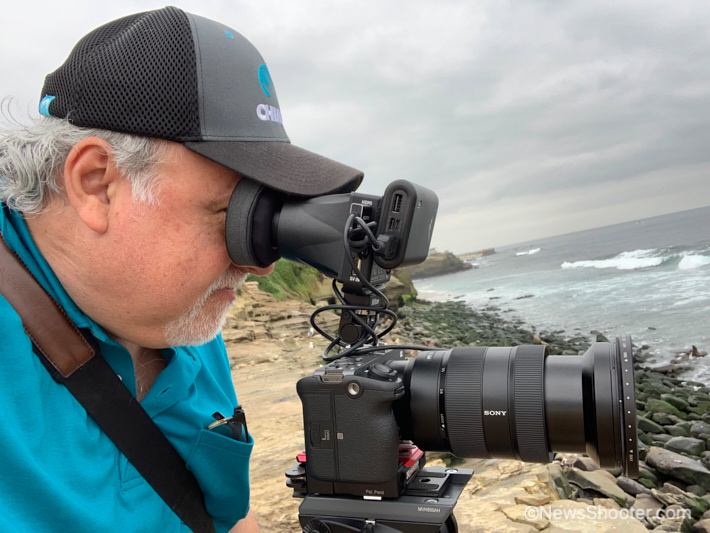
Another reason to miss it is how the FX3 outputs the image to an external monitor. If you want to see the camera info, the image is reduced substantially. I’m left with seeing the whole image full or a heavily cropped one in an external EVF or monitor. It reminds me of using a monitor when in stills mode. Maybe an external EVF mode could exist so the image and the camera settings are in the proper 16×9 format.
The color science on the FX3 is nice. S-Cinetone is my favorite as it has excellent skin tone, and the black levels are not crushed, giving a nice image that is easy to grade if you need to. Rumor has it the a7s III will have S-Cinetone soon, and that makes the FX3 a little less enticing.
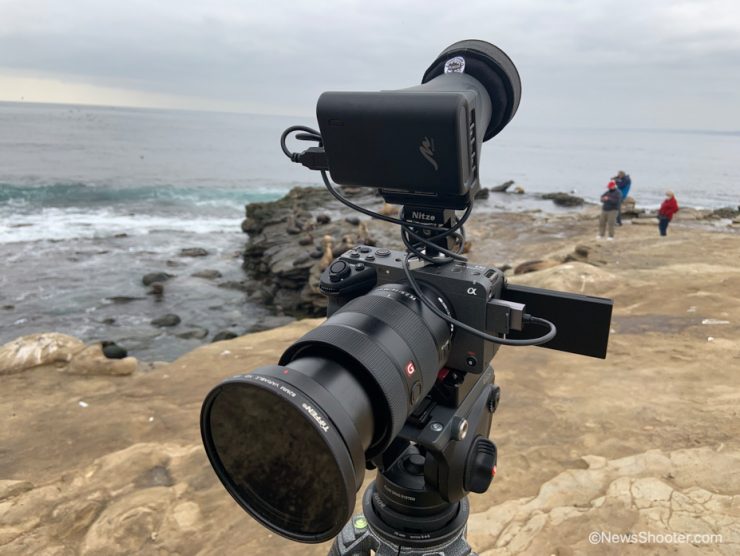
The FX3 retails for $3899.99 USD; as a comparison, the a7s III is $3,498 USD; at $5,499 USD, the canon C70 is $1600 USD more than the FX3. That’s a substantial difference and might not be a good comparison due to the much higher cost of the C70.; however, the C70 gives you more features such as an internal ND and a larger LCD screen. The body is larger… the more I think about it, they only share a fault of no EVF. 
If you add the XLR-K3M XLR audio adapter ($598.00) to an a7s III the total comes to $4096 making the a7s III more expensive than the FX3, but the FX3 doesn’t come with the ECM-XM1 shotgun mic and to my knowledge, the mic isn’t available separately from the XLR-K3M. The $196.01 difference seems to be a wash if you can find the ECM-XM1 as it looks like it isn’t available as a stand-alone purchase. It can be found used or as a spare part for around $130.00.
The true competition for the FX3 is the a7s III and the new BMD Pocket Cinema Camera 6K Pro with internal ND and an optional EVF. Leave it BMD to disrupt yet again.
Like what we do and want to support Newsshooter? Consider becoming a Patreon supporter and help us to continue being the best source of news and reviews for professional tools for the independent filmmaker.

